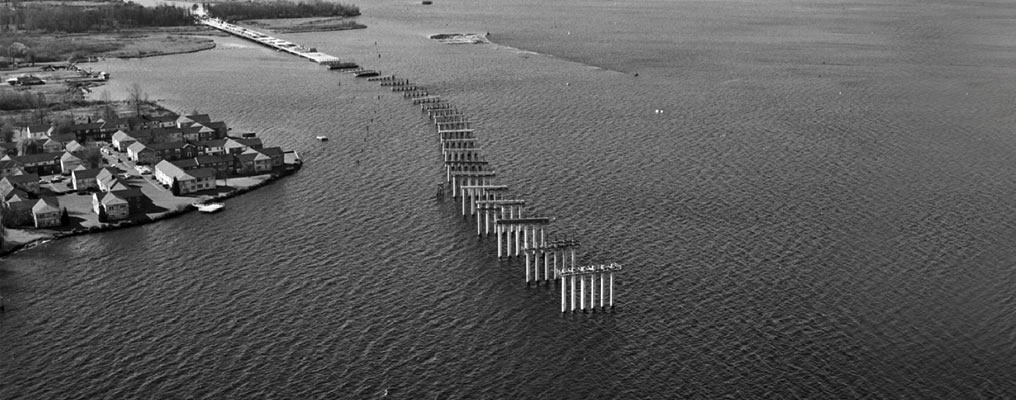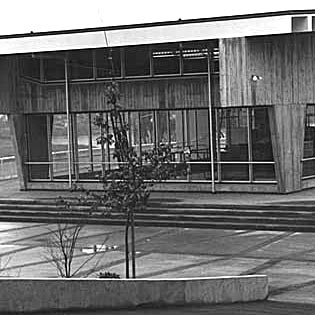
Evergreen Point Bridge under construction, Seattle, March 20, 1962
Courtesy Seattle Municipal Archives (Image No. 70342)
The late 1950s and early 1960s mark the height of the Cold War period, post-WWII suburbanization, and unprecedented local and federal transportation projects. Construction of the Seattle Freeway, which would become part of I-5, began in 1958 and was completed through this area in 1963. Also, the Evergreen Point Floating Bridge opened in 1963, which had a substantial effect on communities on both sides of Lake Washington.
The Cold War period had a significant impact on the University District. In 1961, the Nuclear Reactor Building (now More Hall Annex) was built to provide training and experimental opportunities to Department of Nuclear Engineering students and faculty. The building was also designed to promote nuclear energy to the public. The building’s Brutalism design was a break from the Collegiate Gothic style of most campus buildings. The building was used by the Nuclear Engineering department until 1988, when the reactor was shut down. The reactor sat idle until after 2001, when concerns raised by the Sept 11, 2001 terrorist attacks prompted the university to move forward with decommissioning plans. The reactor was removed in 2008, but the building remains and has received state and federal landmark status. To learn more about the Nuclear Reactor Building visit HistoryLink.org.
The opening of the Evergreen Point Bridge in 1963 eased traffic on the Lacey V. Murrow Bridge, and also stimulated development in the communities on the Eastside. The Washington State Toll Bridge Authority (now WSDOT) paid for the bridge with a $30 million, 40-year bond, which they expected to be paid off in the year 2000. However, traffic was so heavy it was paid off in June 1979 16 years after the bridge was constructed and more than 20 years ahead of schedule. Many businesses located to the Eastside, including Microsoft which moved from Albuquerque to Bellevue in 1978, and later to Redmond in 1986.
